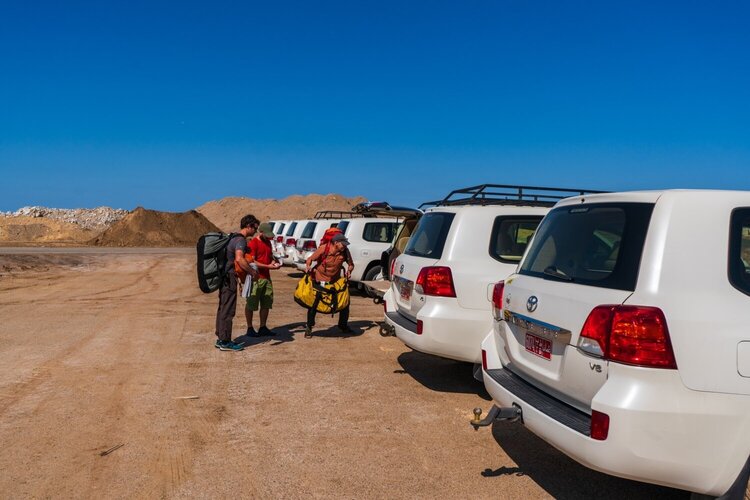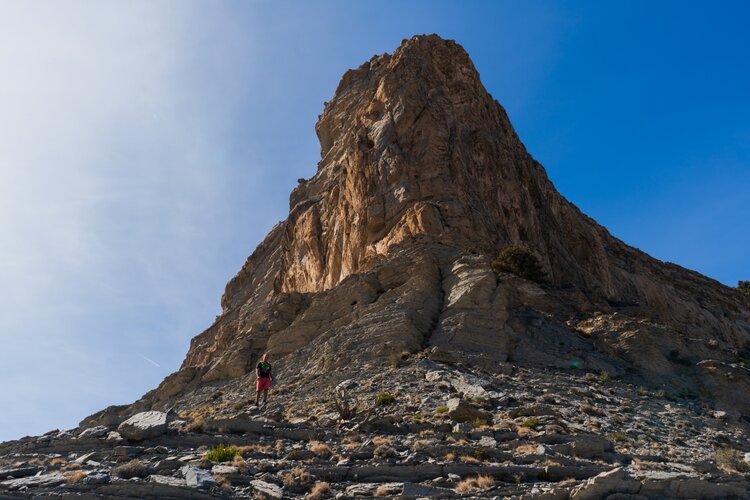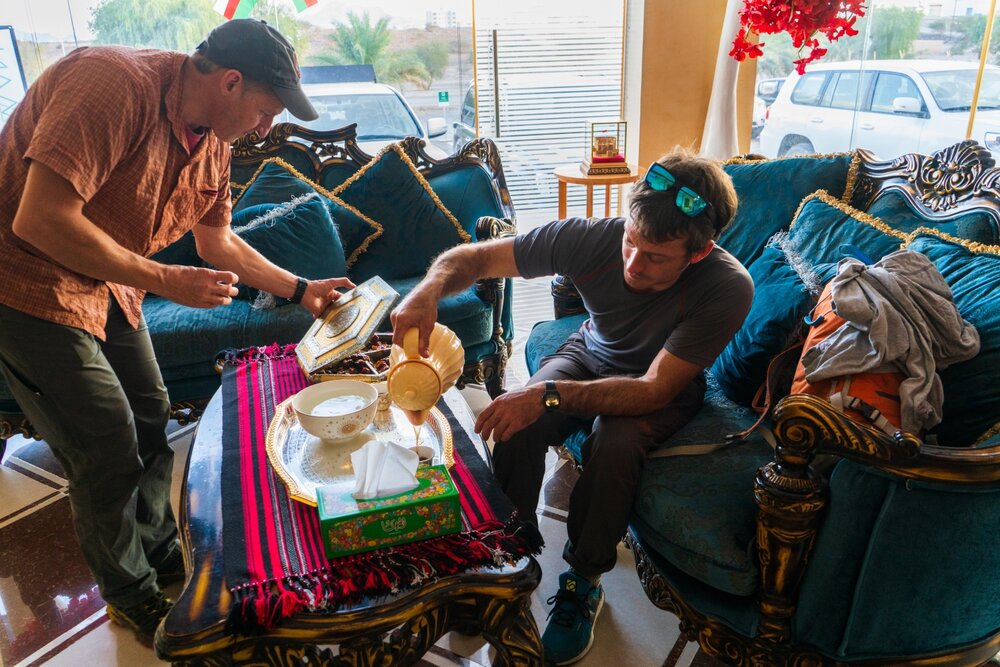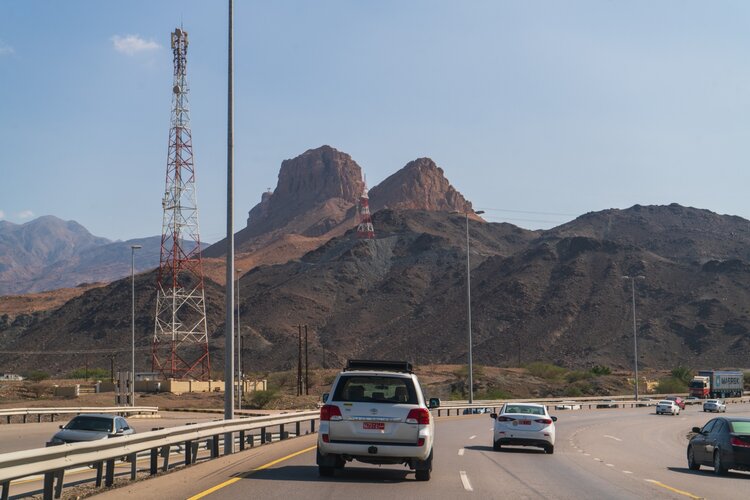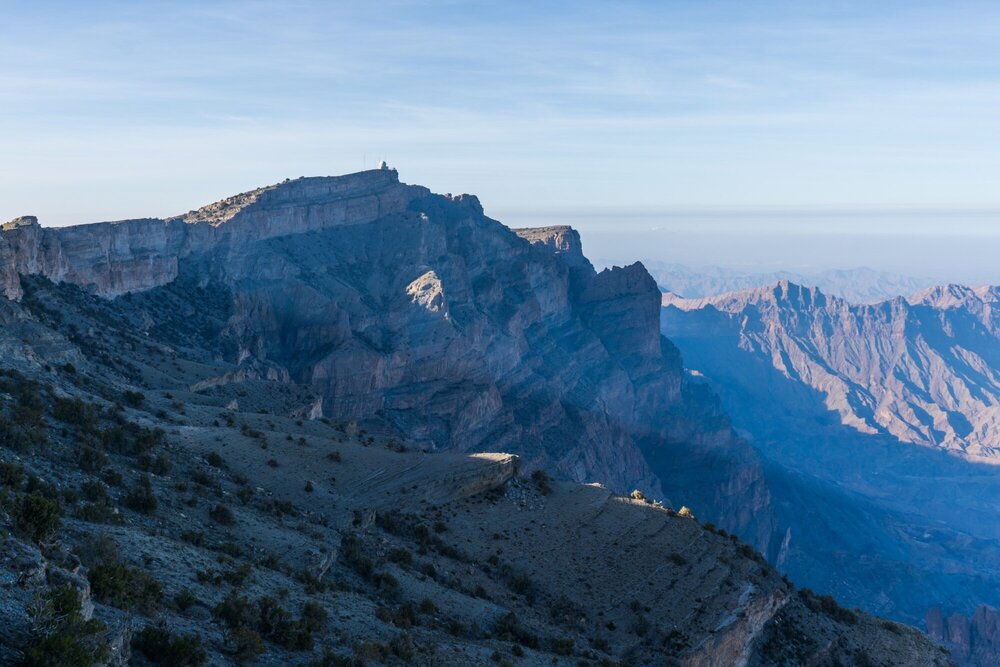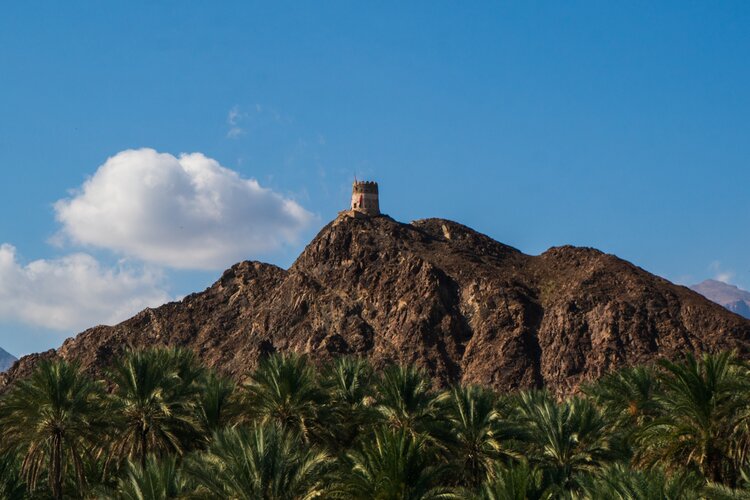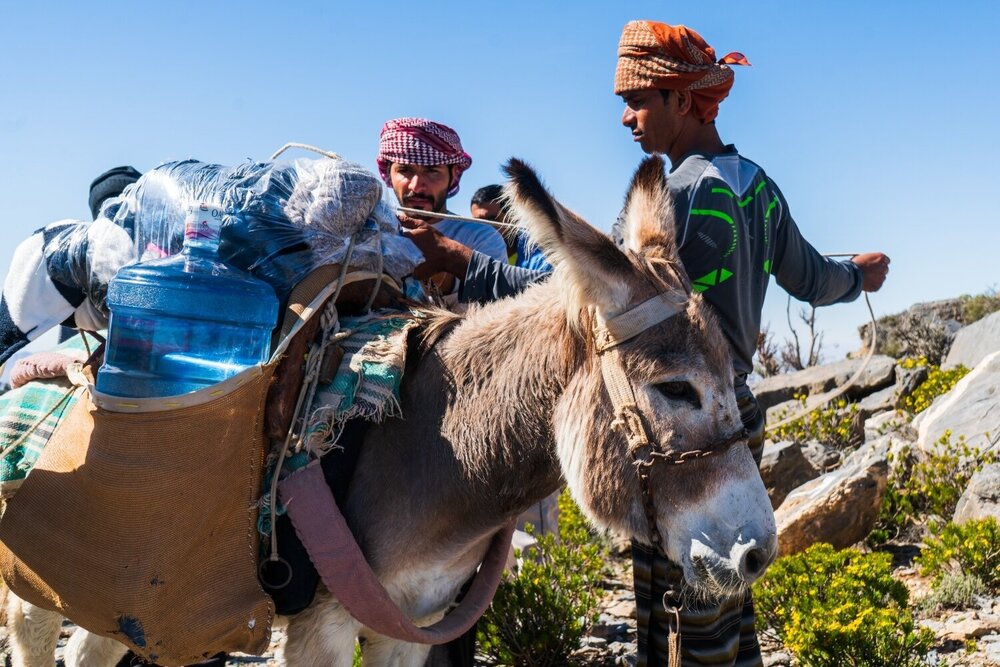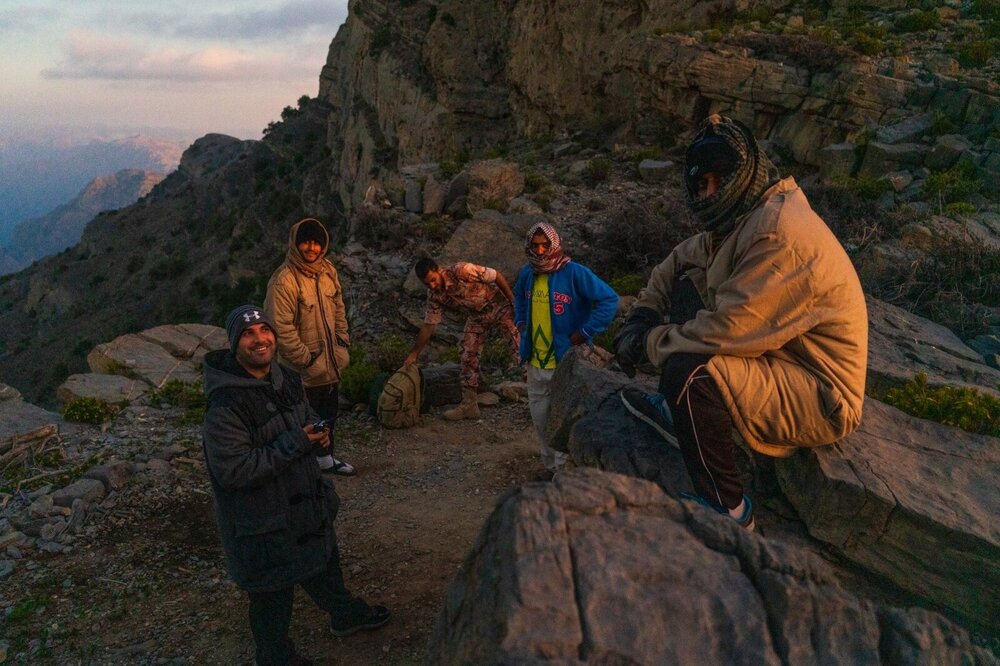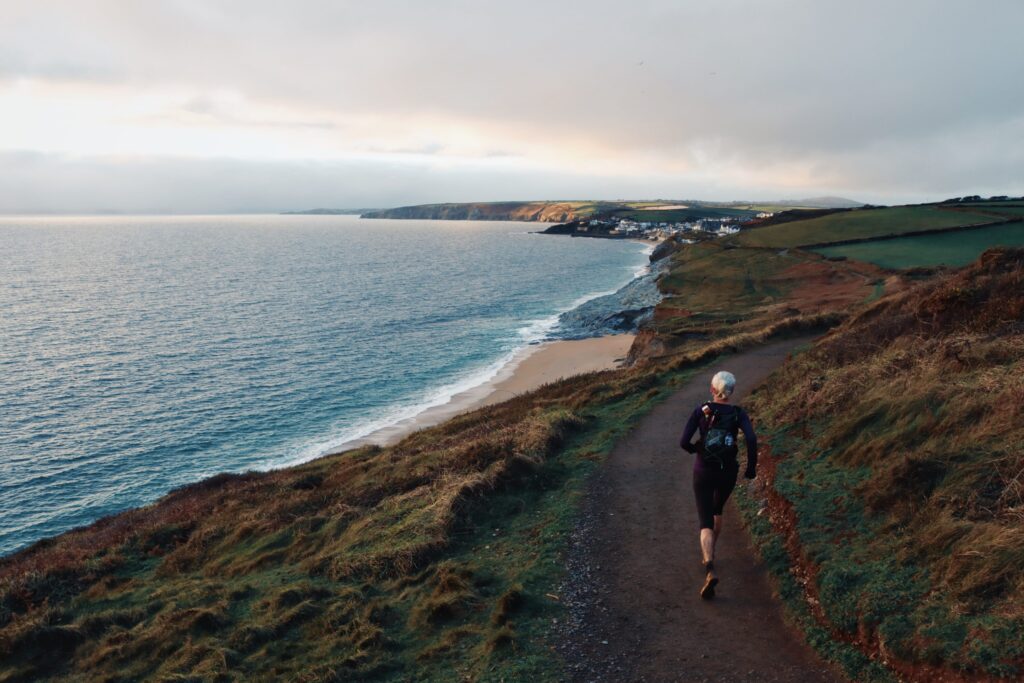Home Story 72 Hours in the Mountains of Oman
72 Hours in the Mountains of Oman
Feature type Story
Read time 15 min read
Published Feb 25, 2021
Author Luca Celano
Photographer Luca Celano
Story & Photography | Luca Celano
Sitting at the very end of the Arabian peninsular, between the deserts of Saudi Arabia and the gulf, is Oman. When you think of the Middle East, certain things spring to mind: deserts, camels, dates, oil… gruelling mountainous ultra marathons probably isn’t one of them.
The Al-Hajar mountain range starts in the United Arab Emirates and runs south into Oman, with Jebal Shams, the tallest mountain of the Hajar range and the country at 3009m high. Climbing this mountain is the crowning challenge of the ‘Oman by UTMB’ ultramarathon. The beautifully way-marked course through ancient villages, high mountains and deep wadis weighs in at a lengthy 170km with 9000m of ascent. Marketed under the branding and franchise of the legendary French UTMB, it is a serious undertaking for those attempting race
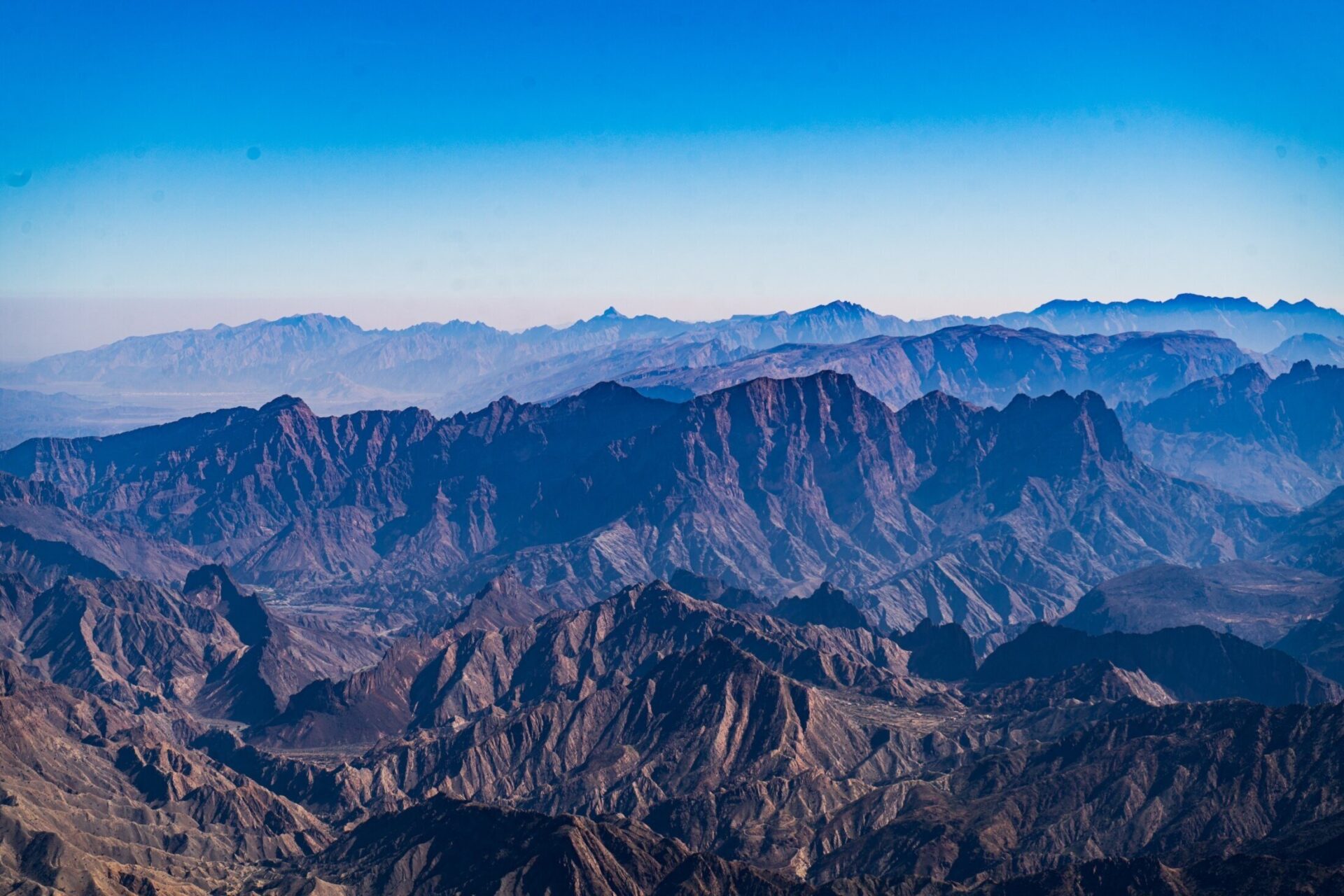
I didn’t even know there were mountains in Oman until my colleague Rich rang me one Thursday night in November 2019. The Mountain Rescue team for the race had pulled out at the last minute and they were desperately searching for suitably qualified climbers and mountaineers to make up their support crew. The catch? We would leave in 24 hours. After a mad rush to organise team members, pack, unpack, repack, and pack again, then dash to the airport, we were on our flight out of cold and rainy London.
Stepping off the plane into 40c heat, the first day was a blur. A white knuckle taxi ride to the race organisers office, the explanation of the runners route through the mountains, the location of dangerous sections and where we would be stationed along the route to provide support. All rather overwhelming after a 14 hour overnight flight.
The aim of Oman hosting the race was to boost their international profile and promote tourism. They have certainly come a long way in 60 years from being a secretive and closed country, to one with a burgeoning tourism industry based on their incredible natural scenery and heritage. As such, the scale of the operation for putting on a faultless race to showcase Oman was incredible. Supported by the Sultan, the race was provided with logistical support from the army and medical staff from the Royal Omani Police.
The guards did the only sensible thing and arrested us at gunpoint
Tim and myself were stationed at the race checkpoint on the summit of Jebal Shams. I’m sure we drew the short straw here. We would be sleeping out for three days and two nights, waiting for runners to pass through and providing mountaineering support to the Omani medical staff assigned to our team should they be needed to help a race participant in distress.
Usually it would take eight hours to hike up to the 3009m summit, avoiding the restricted land of an Omani airforce base which is built right on the peak of the mountain. Luckily, we were promised access, which would dramatically shorten our hike with massive rucksacks of equipment, food and water, as we now had permission to drive.
Unfortunately though, the required documents hadn’t been faxed to the guards, so when confronted with two random Englishmen trying to get inside the perimeter of a radar base, the guards did the only sensible thing and arrested us at gunpoint.
A quirk of the Omani custom is that they must always be gracious hosts. So, despite the arrest, we were treated with local dates and tahini (delicious) and spiced coffee (not so much). Thankfully, after a nervous couple of hours, some phone calls were made, our passports were returned and we were allowed to go on our way. The airforce staff now quite excited that the race would be passing right by their office windows.
Now with the correct paperwork, we continued to our destination and met with our local medical and support staff. Alarmingly, our military paramedic and first responders appeared to have nothing more than the clothes they were wearing and a man-bag of toiletries.
“We will sleep in the mosque,” stated the paramedic. Tim and I exchanged surprised looks and tried to explain to him that we were heading out into the wilderness of a sub-alpine 3000m mountain range for three days, there was no mosque! “Insha’Allah! God will provide!” he said and wandered off up the trail, clutching his man-bag and leaving all the medical equipment behind. “Find some Pakistanis to carry it!” he said as he turned the first bend in the track and disappeared out of sight, leaving us standing on our own.
It’s well documented that Indian and Pakistani workers are treated poorly in Middle Eastern countries, but it is really shocking to see first hand how they are treated as near slaves. The English speaking locals use euphemisms like ‘work team’ and ‘labour force’ to describe their teams of migrant labourers who are worked incredibly hard in tragic conditions and for little pay. Quite how Tim and myself were supposed to organise for some Pakistanis to come and carry the paramedics own medical equipment was beyond us.
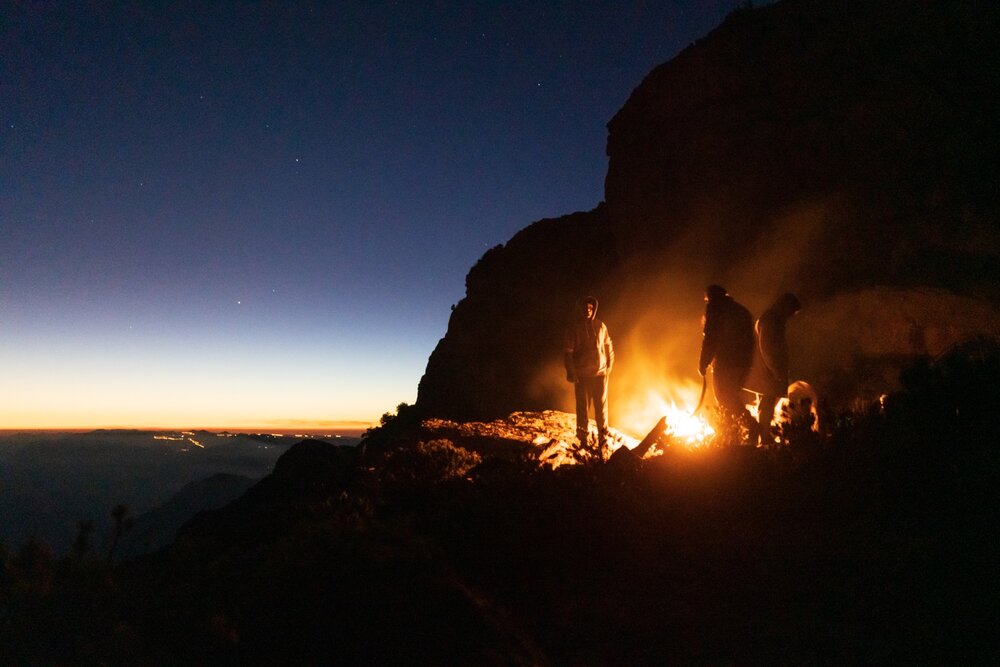
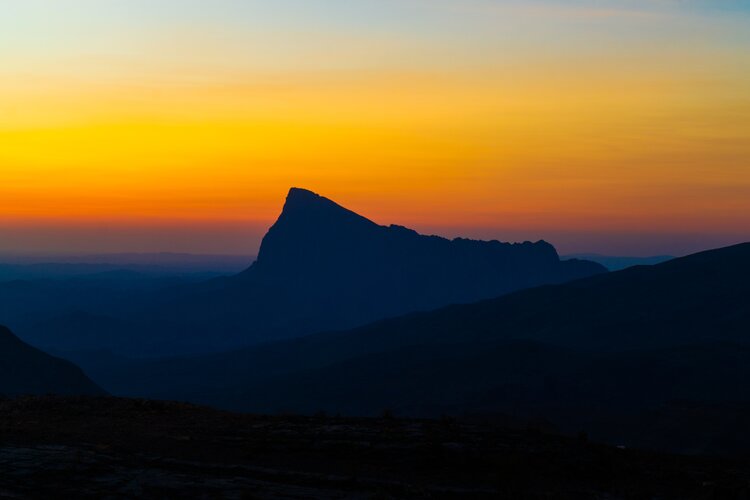
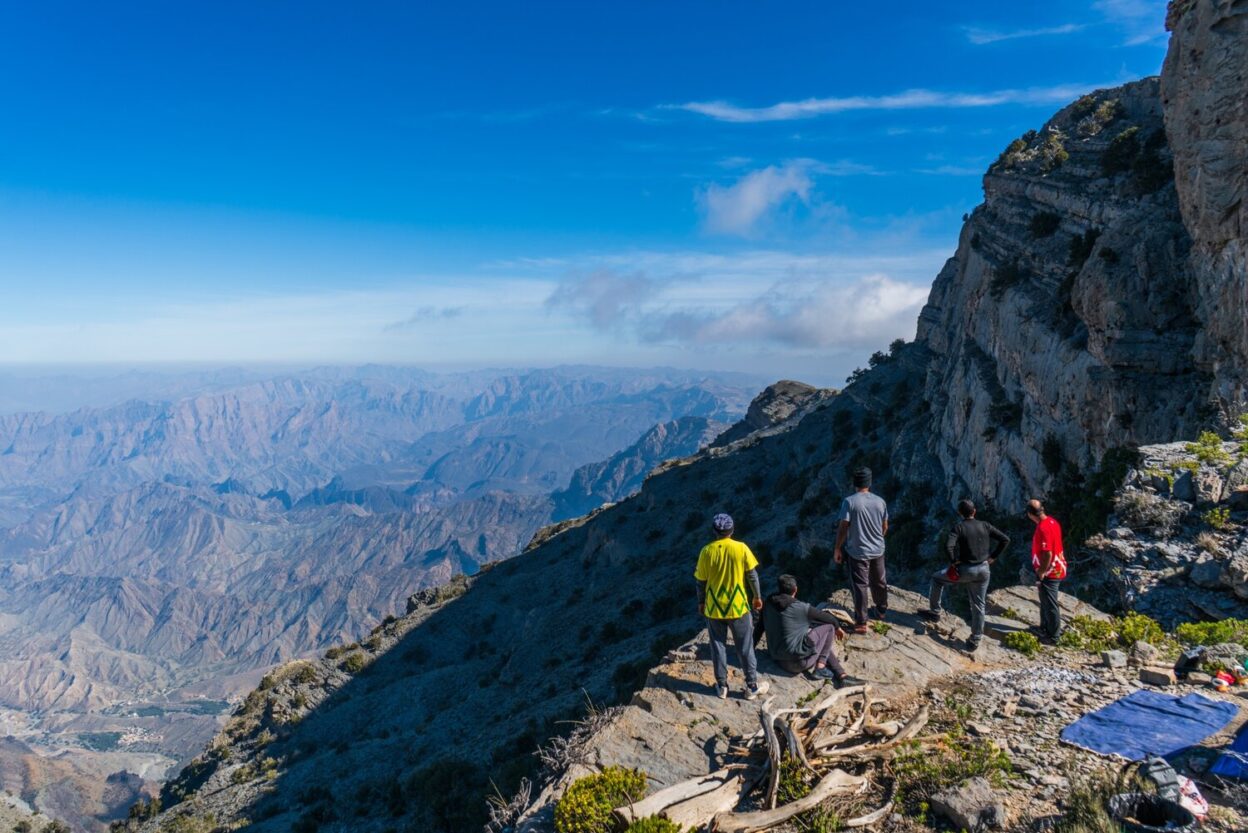
After some tense phone calls to the race director we managed to organise some more locals with donkeys to carry not only the medical equipment, but also tents, sleeping bags and warm clothes for our local staff who had turned up without anything. Scrambling across rough limestone pavement, spiky scrub, and up the steep walls of the wadis which we had to cross, the donkey really was the best option for carrying the heavy loads of equipment.
Two hours later, just as the sun was setting, we made it to the race checkpoint and set up our camp for the next three days. With the first runners not due until mid afternoon the following day, we had nothing to do but enjoy the sunset and the amazing night’s sky. Tim was disappointed he had forgotten his UV light to search for scorpions in the dark, which was just what I wanted to hear as I lay down in my sleeping bag, ready to try and keep warm against the rapidly dropping temperature.
A cold night of minus five Celsius soon dawned into a stunning morning and with it the temperature soared back up to the high 20s. In another display of Omani hospitality, our local staff cooked pancakes with Dairylea triangles and squeezy honey for breakfast (a local delicacy, apparently) whilst we waited for the first runners to appear on the horizon.
Not long after midday and a full 24 hours since starting the race, the first and second position runners made it up the final climb to our checkpoint at 3009m. Climb is definitely the correct word: many of the steep sections of the race are equipped with via feratta cables and metal rungs to literally climb the vertical walls of the deep wadis and limestone cliffs.
Over the course of the day, runners continued to trickle through our checkpoint. We sat and waited, hoping that our mountain rescue services wouldn’t be needed. Considering the terrain, we knew that any potential rescue would have been pretty serious.
He had forgotten his UV light to search for scorpions in the dark, which was just what I wanted to hear as I lay down in my sleeping bag
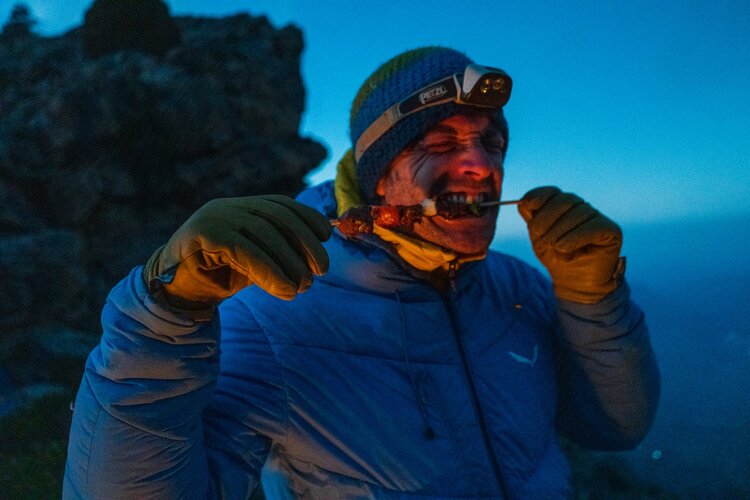
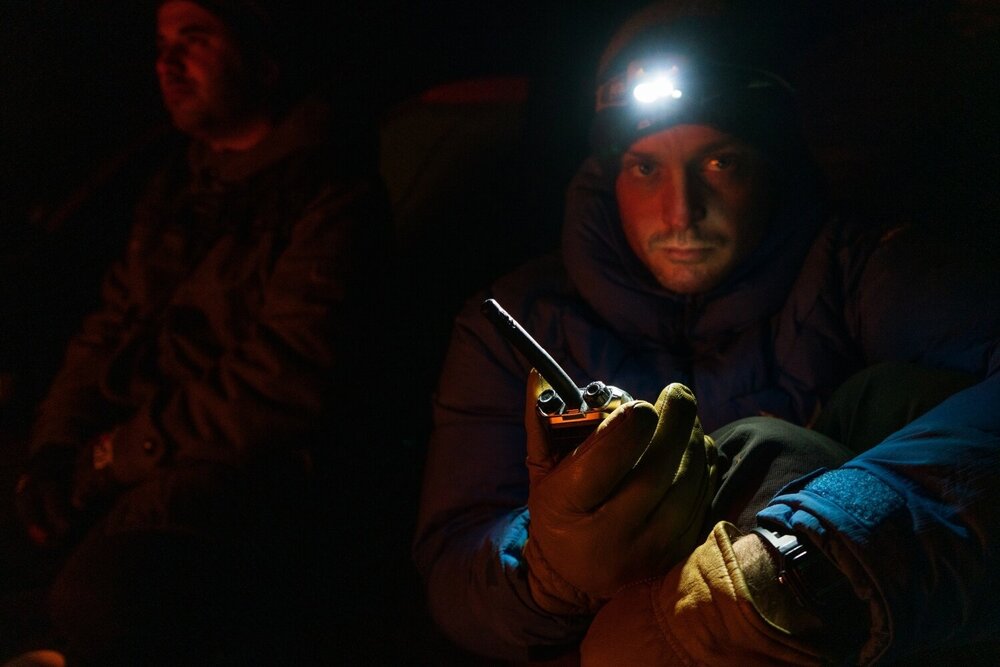
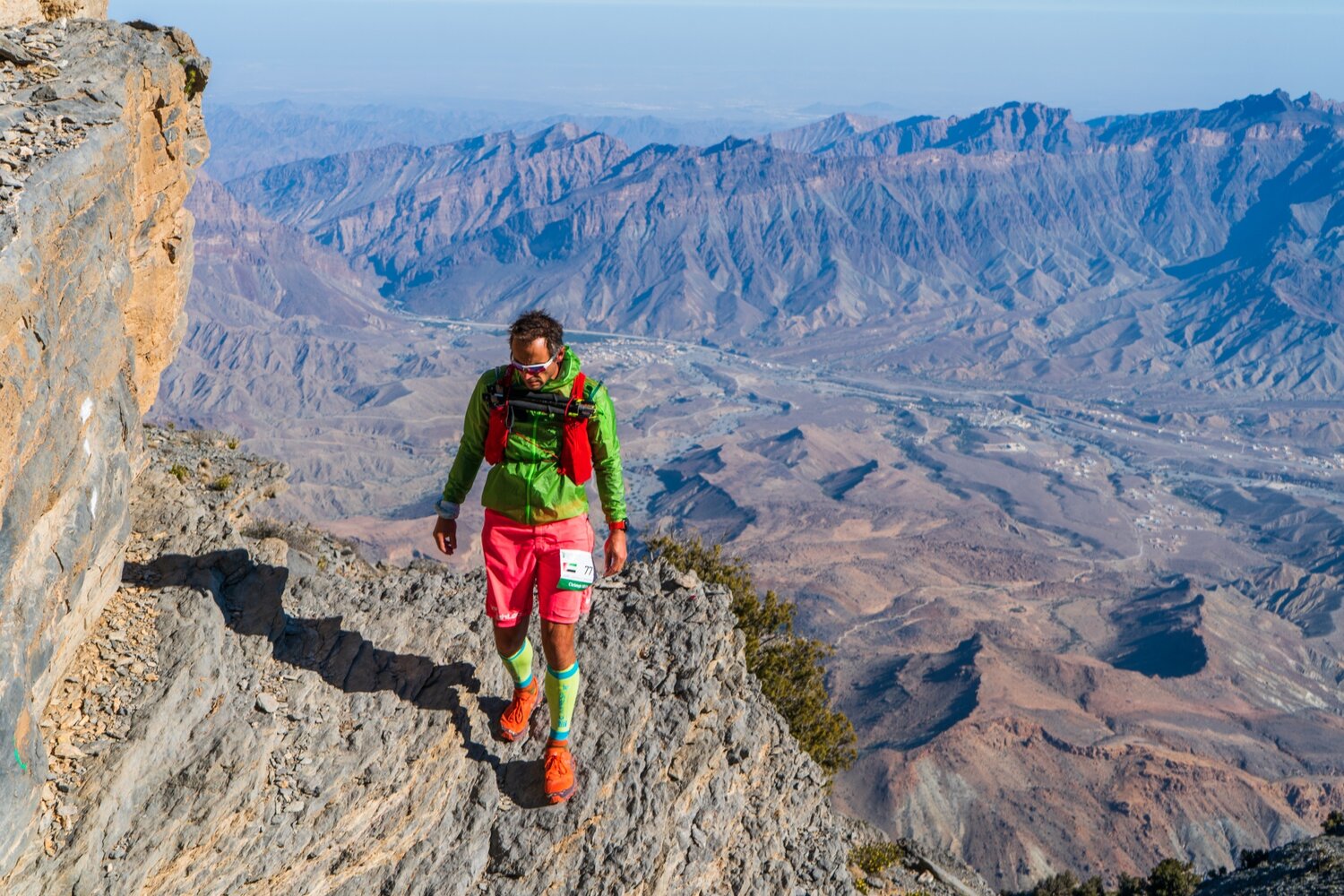
Sweet tea. Nap. Coffee. Nap. Walk around. Coffee. Nap. The cycle continued into our second evening. Incredible goat kebabs cooked by our local guide over the wood fire. More tea. Sitting and waiting and hoping all the runners make it safely to the summit checkpoint.
A few minor injuries presented themselves, mostly due to exhaustion after running such a the gruelling course. We took it in turns sleeping and keeping watch, looking out for the small pools of light bobbing along the trail several hundred meters below our camp, indicating another runner starting their climb to the summit.
The third morning broke clear and cold again. With the last of the runners counted through our checkpoint the job was done. Thankfully our technical rescue equipment was unused and all the race participants who had gotten as far as our checkpoint managed to navigate the course down to the finish line in Al Hamra. We packed up our camp and made our way back to the trailhead, relieved our mountaineering skills and rope-work hadn’t been put to the test.
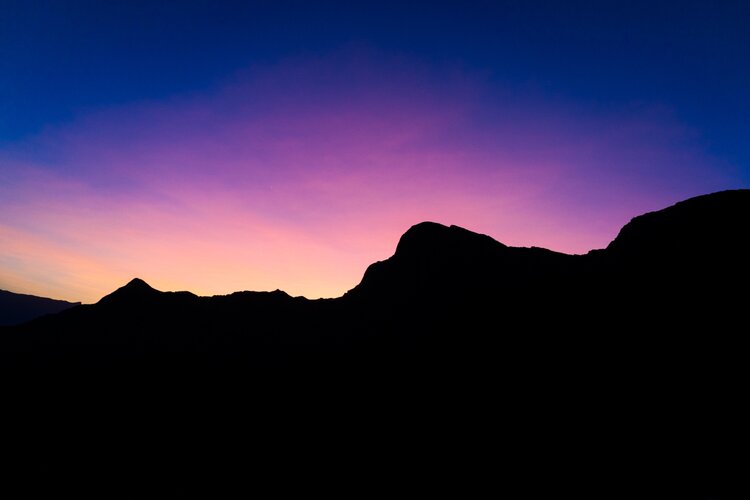
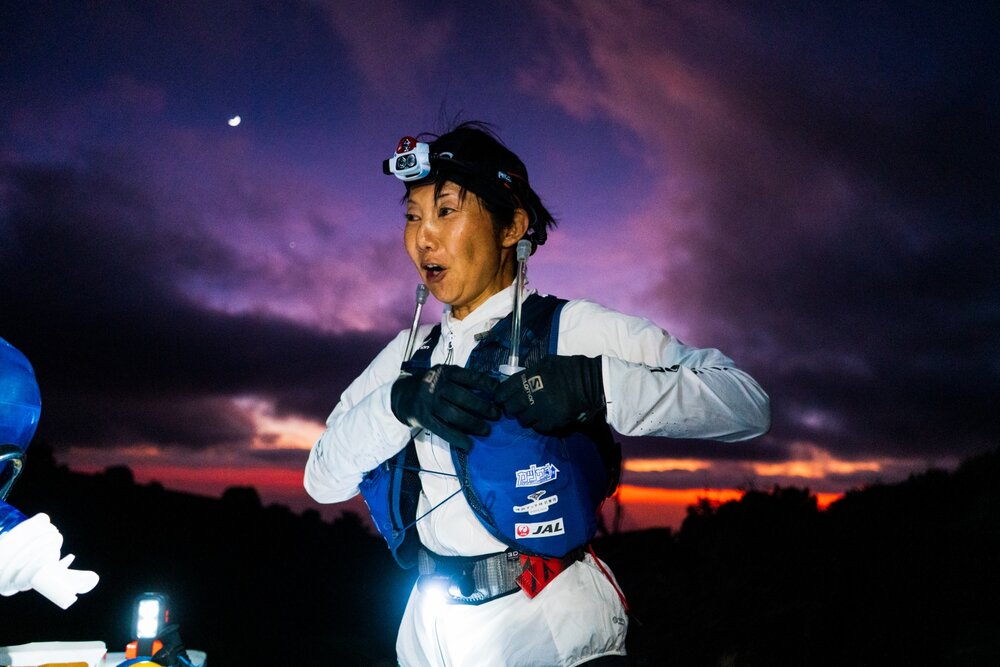
After a quick debrief with the race director and a major panic about a missing runner – who was found shortly after wandering down the wrong path into town – we were back at the airport, just four days after arriving.
I felt pretty wrecked from the stress and sleep deprivation and all we had done is wait at a checkpoint. Seeing the runners who finished the race relatively unscathed after 170km, happily chatting away to each other as they waited to board flights home, showed just how fit and resilient the competing athletes were. Completing the full 170km course is an incredible achievement and it was a real adventure to be part of the supporting crew who made this race happen.
Don’t miss a single adventure
Sign up to our free newsletter and get a weekly BASE hit to your inbox
You might also like
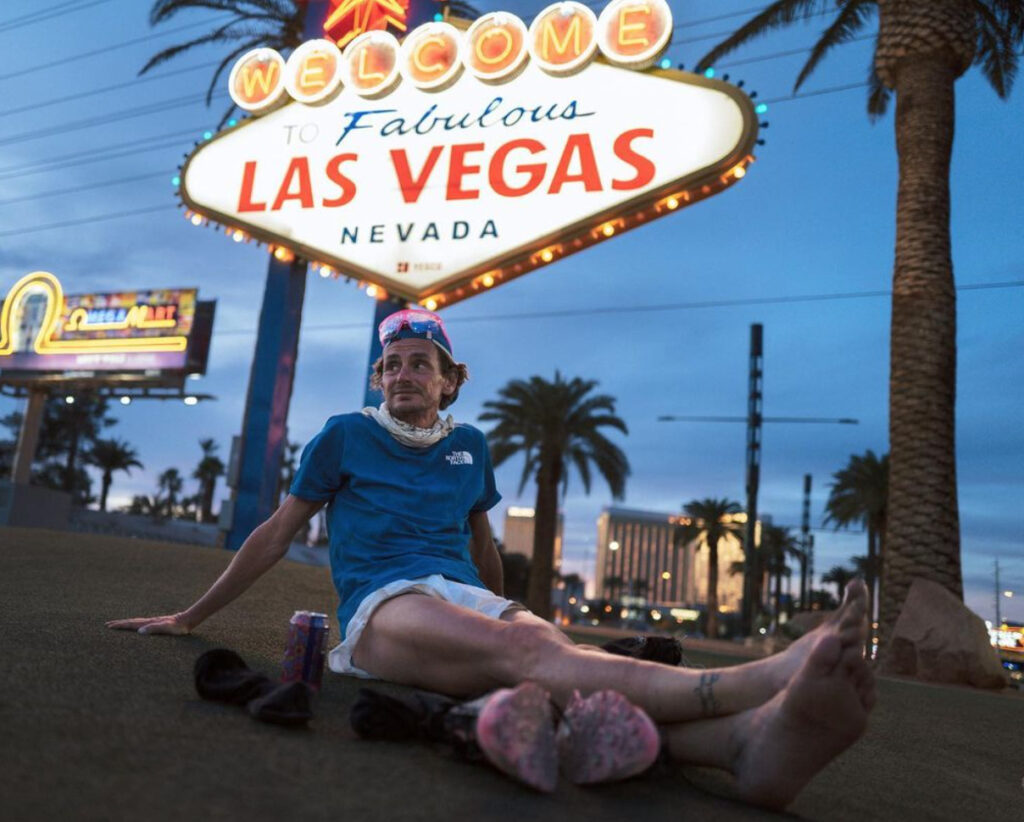
Video • BASE editorial team • Aug 03, 2022
No rules, No spectators
A 340-mile unsanctioned solo race from Santa Monica to Las Vegas
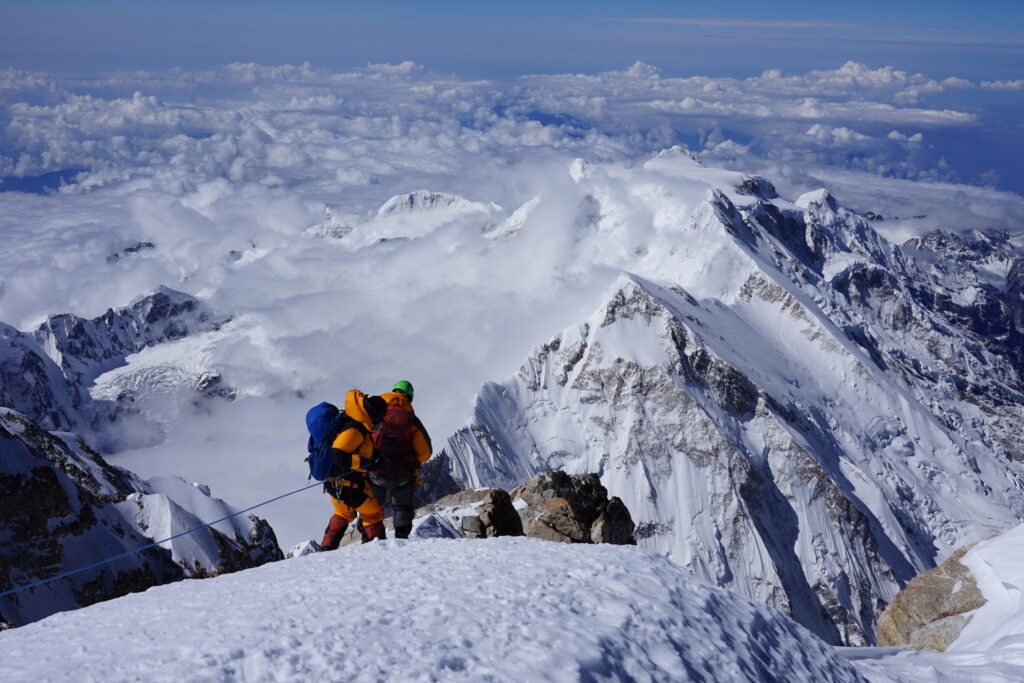
Interview • Ilona Cabral • Jul 27, 2022
Summit to City
An audacious expedition to climb Kanchenjunga and set the fastest-known-time along the Great Himalayan Trail
